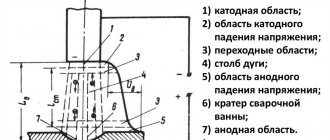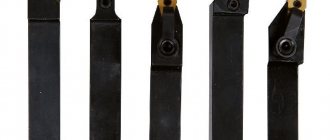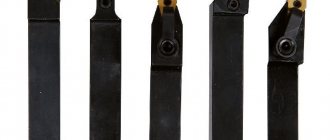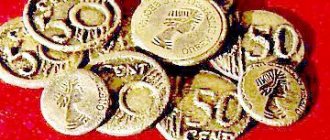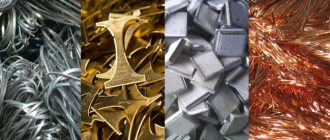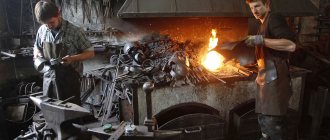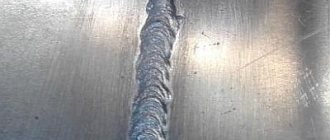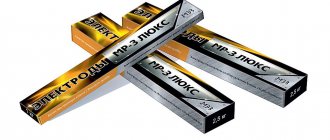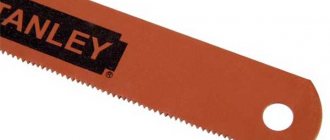Metal chasing is a type of decorative and applied art and a type of cold metal processing. It is the process of applying a flat or three-dimensional pattern to a metal sheet using a special tool and execution techniques.
At its core, it is a process of artistic metal processing. Both varieties are used to decorate the facades and interiors of public and private houses, paintings, weapons, kitchen utensils, everyday items, and items made of precious metals.
Metal embossing is widely used by designers and builders in their work. Nowadays, this is a popular type of artistic product, which is in demand and amazes with its diversity. Requires the highest skill from the performer.
It’s not difficult to do embossing with your own hands if you know the types of craftsmanship, the nuances of manufacturing, the materials used and develop your own style.
Essence of the process
The essence of the embossing technique is the impact of the hammer on the embossing tool. An imprint corresponding to its type remains on the metal.
By performing multiple blows, a relief is obtained that matches the sketch. The shape of the design is conveyed with great expressiveness and accuracy, depending on the tools used by the embosser during the work process. At the same time, the quality of work depends on his qualifications and skill.
Each master has his own style of work. Metal stamping on non-ferrous and ferrous metals differs in type and technology.
Required Tools
To make your first foil stamping you will need the following:
- thick foil for embossing and embossing;
- scissors;
- a sheet of thick cardboard for the backing;
- a stick with a rounded end (a sushi stick, or a blunt pencil, or the rounded end of a brush handle);
- soft substrate (thin felt, magazine, etc.).
Foil embossing method
For children's crafts, it is better to choose food foil in rolls or sheets. Such crafts will have low strength and need additional protection. For teenagers and adults who are confident handling sharp objects, you can use a soda or beer can.
You can add a glue gun with a supply of glue to the tool kit.
Materials and tools used
The metal on which it is planned to mint must have toughness, plasticity, the ability to change shape under the influence of force without breaking, and be polished. It includes sheets:
- copper;
- aluminum;
- brass;
- cupronickel;
- nickel silver;
- iron for roofing;
- low-carbon and soft stainless steel (decapira);
- gold;
- silver;
- foil.
Materials for embossing have different thicknesses; it varies widely from 0.5 to 3 mm and depends on the type of metal used.
The tools used by embossers and DIY enthusiasts are specially shaped hammers, hammers and scribers.
The work uses coins made of alloy tool steel grade U7 or U8, with a diameter of 12÷15 cm of different diameters to create:
- convex spherical imprint (tube);
- a solid line in the form of continuously running points (bypass or consumables);
- the outline of the future design and finishing the background with dots (kanfarniks or crushers);
- leveling the background (patterns with a rough or smooth surface);
- background cuts (cuts with different types of blades: semicircular, flat);
- punches from the inside out (puroshniki);
- imprint (curly).
Every embosser should have his own tool; you can make it yourself.
To do this, you need to buy a steel rod of a certain diameter and make a coin. Before shaping the rod, it must be heated to a bright red color, cooled, and only after these steps begin to make the tool. After production, the coinage must be hardened. At home, this operation can be performed using a blowtorch.
Heat until red again and place in machine oil to cool slowly. Sometimes they use hammers made of wood, so to strike such an instrument you will need a wooden hammer called a mallet.
Hammers for coining must have a special hammer shape, handle and a certain weight. The working surface of the components is polished. The handle is made of wood, always from non-layered species, and must be curved with rounded ends. The weight must correspond to the strength of the chaser.
This allows you to comfortably place the tool in your hand and perform tapping and striking with the necessary force. A scriber is necessary to transfer the design of future coinage onto metal.
In addition, you may need metalworking tools such as rasps, needle files, files, metal scissors, jigsaws, pliers, and punches. A number of other devices are used: dishes for cooking resin, baths for tinting, tool stands, a vice, an emery wheel, sanding and copy paper, and plasticine.
When performing work, you will need auxiliary devices, such as substrates and bags of different densities, as well as consumables that are used to give the product protective properties, strengthen and decorate it, and, if necessary, allow you to beautifully design your work.
Wooden hemp from birch or linden, felt, rubber or plasticine mats, and lead slabs are used as a substrate.
Types and features of coinage
Embossing is traditionally used to make all kinds of decor and beautiful tableware, but with the help of this technique, talented artists create other works of art:
- original paintings and jewelry;
- huge sculptures and monuments;
- magnificent armor and frames for icons;
- mirror frames and caskets;
- book bindings and helmets;
- edged weapons and chain mail;
- candlesticks and candelabra;
- smoking utensils and kitchen utensils;
- lanterns and lamps;
- decorative fences and trellises;
- belts and shields.
Depending on the characteristics of the metal processing technique, the following types of coinage are distinguished:
- openwork;
- contour;
- volumetric.
Openwork chasing is the most common type of artistic metal processing, which is used to apply a relief image to most of the surface of the product. Contour chasing is used to make original ornaments along the edges of blanks, and volumetric chasing is used to create large-scale sculptural compositions and monuments.
Various metals and their alloys can serve as materials for the production of coinage. Most often, craftsmen use sheets for artistic processing:
- copper;
- brass;
- aluminum;
- of stainless steel;
- cupronickel;
- nickel silver
To make jewelry and the most expensive decorative items, minters use precious metals, namely silver and gold. But craftsmen rarely work with these materials; much more often, finished products made of copper or brass are simply coated with a thin layer of gold to give them a characteristic shine.
Main stages of minting
Work in this technique is performed in the following order:
- make a sketch of the drawing;
- cut out a plate from the selected metal corresponding to the size of the picture, with the addition of allowances (for fastening and framing at the end of the work);
- if necessary, the workpiece is fired and leveled;
- perform a degreasing operation;
- cover one side with gouache or white paint;
- transfer the sketch using carbon paper and a scriber to the workpiece;
- coated with nitro varnish (optional);
- work out all the contours and lines with coins of the appropriate type, controlling the positions of the coin and the part where the minting is performed;
- perform decorative finishing.
Particular attention is paid to the position of the coinage. It should be slightly tilted back, held in the left hand between the fingers so that the little finger is not involved.
The elbow does not rest on anything, it is suspended. This ensures good manipulation of the tool. The hammer blows are applied moving forward, while it is held in the right hand.
Materials
- Red copper is the most preferred metal for minting, due to its ductility. Easily takes a given shape and can withstand high relief of the product. After polishing it does not darken for a long time.
- Brass is an alloy of copper and zinc. It is less plastic in comparison with copper, but has good data for mechanical processing associated with minting: stamping, cutting, rolling and other operations. It polishes well and retains its shine for a long time. When oxidized, it acquires a beautiful greenish color.
- Aluminum is a fairly hard metal, but easy to mint. In the form of foil it can be drawn out. Does not require firing, as it does not deform during processing. It is easy to polish and retains its noble matte shade for a long time.
- Stainless steel - used for especially large products, minted only on special machines. Manual processing is impossible because steel has high strength and toughness.
- Nickel - in its pure form is unsuitable for minting, but when alloyed with copper it is a convenient and reliable material for the manufacture of products with a high level of aesthetics. The most popular alloys are cupronickel and nickel silver. They are highly polished and do not require cleaning.
- Roofing iron - the material is used only for the manufacture of simple products. The consistency of the metal is fragile and prone to cracking.
Artistic products made by embossing are in demand in many areas of public life. They decorate hallways and offices. Particularly valuable specimens are found in museums and art galleries.
Do-it-yourself artistic embossing
Do-it-yourself embossing will decorate any interior, it is a good gift for friends and colleagues, and can even become a profitable business.
And you don't have to be an artist. Nowadays you can find many drawings on the Internet. By adding your own taste, imagination and mastering the basics of embossing, you can create unique masterpieces. For beginners, it is recommended to first emboss with a simple pattern. This way you can learn how to transfer a drawing onto a plate, trace the outline of an image with a consumable, lower the background with a quilt, create volume with a powder brush, and trim the background with camphor.
And only after trying all the tools in action and getting a positive result, you can begin to decorate your work of any complexity. The design is minted only with the right tool, so you need to buy it or make it yourself, as well as choose the right accessories and execution technique.
But don’t forget about arranging your workplace. It should be comfortable and well lit.
Tools
To work, a master embosser needs a set of special tools and devices. Professionals with many years of experience have an entire tool base, numbering dozens and hundreds of different devices. Beginning embossers make do with several tools.
View gallery
To make a simple product, you need a set of four- or octagonal forged coins:
- kanfarnik - a coin in the shape of a thick needle with a rounded end;
- consumable - a straight, flat or radius-shaped tool in the form of a screwdriver;
- chop - a sharpened chisel-shaped chisel designed for blind or through cutting of material;
- polishers - various flat-shaped tools for polishing - leveling the base.
For full-fledged work, plumbing equipment, various clamps, clamps, vices and weights are also required. You can’t do without wooden hammers (mallets).
Various types of products
Embossing is widely used in the production of products for various purposes, from sheets of metal of different grades. It is widely used in the decoration of buildings inside and outside. This operation is used in the production of metal utensils, decorative manels, and jewelry.
Forging products
When creating products, craftsmen use special techniques, for example, chasing grapes. There are many secrets in this business that are often passed down from generation to generation.
Paintings and interior elements are produced in embossing workshops. In addition, some craftsmen carry out work on the production of paintings that consist of several layers, including those that consist of several metals. This combination gives the composition multicolor.
Embossing on three-dimensional products
In embossing workshops, fragments are also produced that can be installed in furniture made from solid wood and various types of panels.
A special type of coinage is frames for icons; in addition to drawings, precious stones are fixed on their surface.
For as long as coinage has existed, separate styles have developed (Caucasian, Eastern, etc.). Modern masters use all previously developed styles and at the same time develop their own.
Main types of coinage
There are several types of coinage - three-dimensional and flat. Volumetric is distinguished by a high relief shape. Flat, on the contrary, has a low relief. Each of these types has a number of advantages. Undoubtedly, three-dimensional relief looks more impressive; in fact, these are 3D technologies implemented in metal, for example, pipe embossing can be classified as three-dimensional. On the other hand, flat metal chasing is more openwork in nature and this can be considered a sign of a high artistic style.
Types of coinage
Volumetric embossing on metal
Volumetric metal minting is a much more complex technological process. Moreover, processing the part using such methods can lead to deformation of the base metal.
Meanwhile, three-dimensional artistic metal chasing is considered to be a product of high artistic value.
By the way, archaeologists still find products of relief artistic chasing on metal, made of thin sheets of gold and silver. Ancient craftsmen mastered the methods of casting these metals, but preferred to use more subtle methods of making jewelry.
Coinage
The art of coinage dates back to the times of the ancient world, as an example, we can cite the gold mask from Mycenae.
Chasing - handmade
The design is minted on a sheet of metal, having previously laid it on a birch or linden ridge. In addition to them, rubber and a bag of sand are used as a substrate for execution. Some craftsmen use lead.
By the way, mints where coins were minted could not do without minting. They are made of metal more than 1 mm thick. To obtain high-quality and accurate relief, special presses are used, with a pre-installed stamp on which drawings and the necessary inscriptions are applied. The press provides the force necessary for impact, deforming the surface to the required state.
By the way, regardless of the type of embossing, it is completed by finishing.
